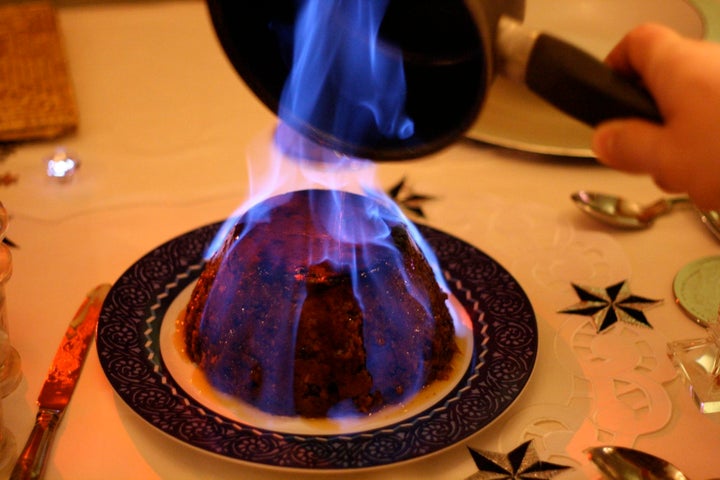This time of year there's mention of a few kinds of puddings that aren't actually puddings at all. Whether it's Christmas pudding, plum pudding or figgy pudding -- you know the one we all sing about from the Christmas carol "We Wish You a Merry Christmas" -- if you live stateside, chances are you have no idea what this pudding looks like, can't even begin to image what it tastes like, nor have the faintest idea of what it is at all.
Let's begin with what it looks like. This:

That is a Christmas pudding that is served lit on fire. Yes, you blow out the flames before eating it (much like a baked Alaska). And yes, the fact that you can light it on fire does mean it's full of booze. Christmas pudding isn't pudding like we know it, but it is a dessert. The UK holiday classic more closely resembles fruit cake -- and sounds just about as good too.
The cake is typically made about four weeks before Christmas, and sometimes even up to a year before. It's made with a variety of dried fruits -- figgy pudding usually contains figs and plum pudding contains raisins -- nuts, eggs and suet. (Suet is animal fat.) The mixture is pressed into a bowl and steamed on the stove for many hours. The pudding is then hung in a cloth and kept in a dry place until the holidays. Thanks to the high alcohol content of the cake, there's no risk of it spoiling.
The pudding dates back to Medieval England and has changed drastically since then, luckily, but it still remains a traditional end to the Christmas meal in Britain to this day. If you want to try making it yourself, Nigella has a trusty recipe that won't lead you astray.
Related on HuffPost: